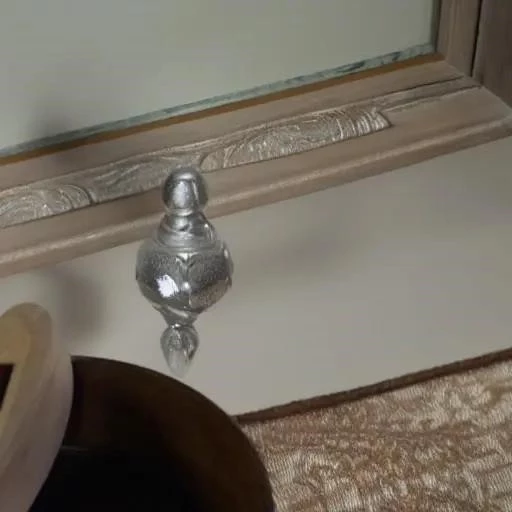In the vibrant world of classic car restoration, where passion meets precision, every detail matters․ Enthusiasts globally pour their hearts, souls, and considerable resources into resurrecting automotive icons, transforming faded memories into gleaming realities․ While the roar of a perfectly tuned engine or the glint of a freshly polished chrome bumper often captures immediate attention, there’s an often-understated hero in this meticulous endeavor: the humble, yet incredibly transformative, classic car interior paint․ Far from being a mere cosmetic touch-up, the choice and application of this specialized finish can dramatically elevate a restoration from good to truly breathtaking, imbuing the cabin with an authentic charm that speaks volumes about the vehicle’s storied past and its revitalized future․
Imagine stepping into a vintage Mustang or a timeless Mercedes-Benz, only to be greeted by a dashboard peeling like sunburnt skin or door panels that have lost their original luster․ Such imperfections, however minor, can shatter the illusion of a pristine restoration, betraying the immense effort invested elsewhere․ Conversely, a perfectly restored interior, boasting period-correct hues and an immaculate finish, invites passengers into a time capsule, preserving history while offering a luxurious, tactile experience․ This isn’t just about aesthetics; it’s about authenticity, value retention, and the profound joy derived from a truly complete transformation․ By meticulously selecting and applying the right interior paint, restorers are not merely covering surfaces; they are breathing new life into forgotten canvases, ensuring every component resonates with the vehicle’s original glory, making the cabin a sanctuary of automotive heritage․
| Category | Description | Key Considerations |
|---|---|---|
| Paint Types for Classic Interiors | Specialized formulations designed for various interior materials like vinyl, plastic, leather, and metal․ Includes flexible coatings, vinyl dyes, and durable enamels․ | Adhesion properties, flexibility, color matching, UV resistance, drying time, and compatibility with original materials․ Brands like SEM, ColorBond, and Dupli-Color are popular․ |
| Preparation Process | Thorough cleaning, degreasing, repairing minor imperfections (cracks, scuffs), sanding for proper adhesion, and masking adjacent areas․ | Surface cleanliness is paramount; any residue can compromise paint adhesion․ Use appropriate fillers and primers for specific materials․ |
| Application Techniques | Typically spray application for an even, factory-like finish․ Multiple thin coats are preferred over heavy coats to prevent drips and ensure durability․ | Proper ventilation, correct spray gun settings, consistent distance, and temperature/humidity control are crucial for a flawless finish․ |
| Maintenance & Preservation | Regular cleaning with mild, non-abrasive cleaners․ Protecting the interior from prolonged direct sunlight using UV protectants or car covers․ | Avoid harsh chemicals that can degrade the paint․ Promptly address spills or stains․ Proper care extends the life and vibrancy of the restored finish․ |
| Reference & Resources | For detailed guides, product information, and community support in classic car interior painting․ | Classic Industries ― Interior Paint |
The evolution of interior paint technology for classic cars has been nothing short of remarkable․ Gone are the days when a simple can of spray paint was deemed sufficient․ Today, manufacturers have developed incredibly effective, highly specialized formulations engineered to mimic original factory finishes while offering superior durability and resilience․ From flexible vinyl dyes that penetrate and bond with the material, ensuring no cracking or peeling, to robust urethane enamels providing a hard-wearing, color-fast surface for dashboards and metal trim, the options are vast and precise․ These modern paints are designed not only for aesthetic perfection but also for longevity, resisting UV damage, scuffs, and the daily wear and tear that vintage cabins inevitably face․ The science behind these coatings, involving advanced polymers and pigment technologies, allows for unparalleled color matching, bringing back those elusive, era-specific shades with breathtaking accuracy․
“The right interior paint isn’t just a product; it’s an investment in authenticity and future enjoyment,” asserts Marcus Thorne, a renowned automotive historian and lead restorer at Heritage Customs․ “We’ve witnessed firsthand how a meticulously repainted dashboard, perfectly matching the original grain and sheen, can elevate a vehicle’s perceived value by thousands․ It’s the subtle details, expertly executed, that truly define a world-class restoration․” Indeed, industry examples abound where superior interior finishes have become the hallmark of excellence․ Companies like SEM Products have carved out a significant niche, offering a comprehensive line of color-matched aerosols and bulk products specifically for automotive interiors, enabling restorers to achieve factory-fresh results on vinyl, plastic, carpet, and even velour with astonishing ease and professional quality․
The process itself, while demanding, is immensely rewarding․ It begins with painstaking preparation: surfaces are thoroughly cleaned, degreased, and often treated with adhesion promoters․ Any cracks or imperfections are meticulously repaired, sanded smooth, and primed, creating a flawless canvas․ Then comes the art of application, often involving multiple thin coats, each allowed to cure properly, building up a deep, consistent finish that exudes quality․ This deliberate, patient approach, often requiring specialized equipment and a climate-controlled environment, ensures that the paint not only looks spectacular but also withstands the test of time, resisting chipping, fading, and flaking for years to come․ It’s a testament to the dedication of skilled craftsmen, breathing vibrant life back into worn-out components․
Looking ahead, the future of classic car interior paint is incredibly promising, driven by ongoing innovation in material science and a growing demand for sustainable solutions․ Researchers are actively exploring bio-based polymers and low-VOC (Volatile Organic Compound) formulations, aiming to minimize environmental impact without compromising performance․ Imagine paints that not only restore but also subtly enhance material properties, offering improved sound dampening or even antimicrobial benefits․ This forward-thinking approach ensures that classic car restoration remains a vibrant, evolving field, continuously pushing the boundaries of what’s possible․ By integrating insights from cutting-edge research, the industry is poised to offer even more resilient, aesthetically perfect, and eco-conscious options, further cementing the role of interior paint as an indispensable element in preserving our automotive heritage for generations to appreciate․
Ultimately, the journey of restoring a classic car is one of passion, dedication, and an unwavering commitment to excellence․ While the engine’s roar and the body’s gleam capture immediate attention, it is the sophisticated application of classic car interior paint that truly completes the symphony, harmonizing every element into a cohesive masterpiece․ It transforms a vehicle from a mere object of desire into a fully immersive experience, a tangible piece of history that is both beautiful to behold and a joy to inhabit․ As restorers continue to embrace these advanced solutions, they are not just repainting surfaces; they are revitalizing legacies, ensuring that the magic of these timeless machines endures, captivating hearts and minds for decades to come․






